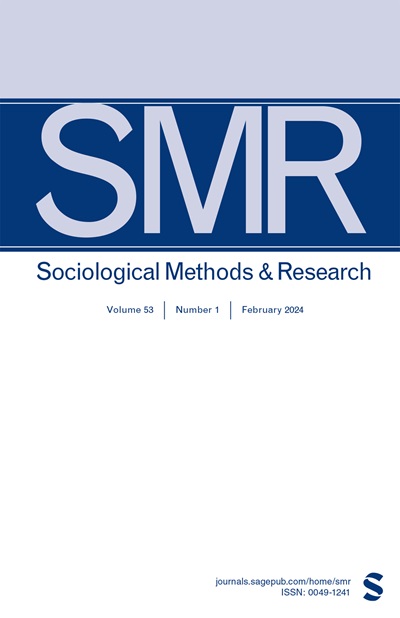Graphical Causal Models for Survey Inference
IF 6.5
2区 社会学
Q1 SOCIAL SCIENCES, MATHEMATICAL METHODS
引用次数: 1
Abstract
Directed acyclic graphs (DAGs) are now a popular tool to inform causal inferences. We discuss how DAGs can also be used to encode theoretical assumptions about nonprobability samples and survey nonresponse and to determine whether population quantities including conditional distributions and regressions can be identified. We describe sources of bias and assumptions for eliminating it in various selection scenarios. We then introduce and analyze graphical representations of multiple selection stages in the data collection process, and highlight the strong assumptions implicit in using only design weights. Furthermore, we show that the common practice of selecting adjustment variables based on correlations with sample selection and outcome variables of interest is ill-justified and that nonresponse weighting when the interest is in causal inference may come at severe costs. Finally, we identify further areas for survey methodology research that can benefit from advances in causal graph theory.调查推断的图形因果模型
有向无环图(dag)现在是一种流行的工具,告知因果推理。我们还讨论了如何使用dag来编码关于非概率样本的理论假设和调查非响应,并确定是否可以识别包括条件分布和回归在内的总体数量。我们描述了偏见的来源和在各种选择场景中消除偏见的假设。然后,我们介绍并分析了数据收集过程中多个选择阶段的图形表示,并强调了仅使用设计权重隐含的强假设。此外,我们表明,基于与样本选择和感兴趣的结果变量的相关性选择调整变量的常见做法是不合理的,并且当对因果推理感兴趣时,非响应加权可能会付出严重的代价。最后,我们确定了调查方法研究的进一步领域,这些领域可以从因果图理论的进步中受益。
本文章由计算机程序翻译,如有差异,请以英文原文为准。
求助全文
约1分钟内获得全文
求助全文
来源期刊

Sociological Methods & Research
Multiple-
CiteScore
16.30
自引率
3.20%
发文量
40
期刊介绍:
Sociological Methods & Research is a quarterly journal devoted to sociology as a cumulative empirical science. The objectives of SMR are multiple, but emphasis is placed on articles that advance the understanding of the field through systematic presentations that clarify methodological problems and assist in ordering the known facts in an area. Review articles will be published, particularly those that emphasize a critical analysis of the status of the arts, but original presentations that are broadly based and provide new research will also be published. Intrinsically, SMR is viewed as substantive journal but one that is highly focused on the assessment of the scientific status of sociology. The scope is broad and flexible, and authors are invited to correspond with the editors about the appropriateness of their articles.
 求助内容:
求助内容: 应助结果提醒方式:
应助结果提醒方式:


